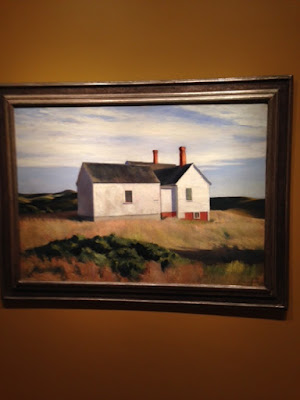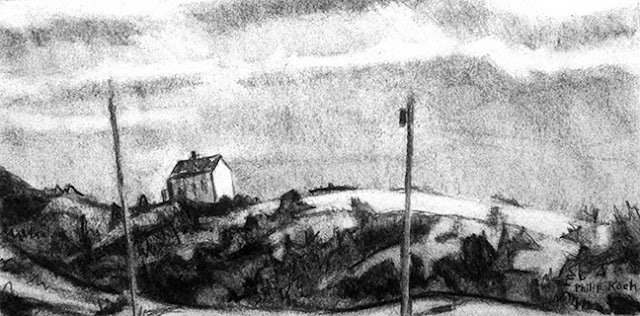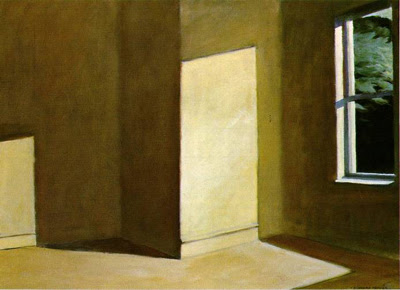At the Smithsonian American Art Museum on Christmas Eve
The holidays are a time to get together with good old friends. My wife Alice and I decided to drive down to Washington, DC to our favorite museum. The Smithsonian American Art Museum (SAAM) has an enormous and unrivaled permanent collection. We've visited it ever so many times that many of my "old friends" are to be found hanging on its walls.
They have the best angel painting ever, Abott Henderson Thayer's Stevenson Memorial. Can't help myself, just love that painting for how it sounds its contemplative and slightly melancholy mood. That's me soaking it up.
Here's an old friend, Edward Hopper, who people never think of as a celebratory artist. Here's his Ryder House, to me it's a stirring hymn to the brilliance of sunlight on a white wall. Its light seems to pulse with its own clear energy.
Look at how the artist pushes the highlights on the sunlit grasses down way darker than the whites on the house. He knows you can only give a few of your highlights star billing.
SAAM owns one of Hopper's most famous paintings, Cape Cod Morning. Here's my wife Alice checking out the painting.

I've always admired the pattern of the white siding on the house. It's crisp rhythm plays off so nicely against the soft foliage and grasses at the right hand side of the painting. Hopper was sensitive to the danger that these patterned lines could become too stiff or rigid.
Looking closely at the painting's upper left corner one can see how Hopper approached painting these rows of lines gradually, painting them in first softly with thin oil washes with very low contrast.
Another old friend to me is Winslow Homer's oil High Cliffs, Coast of Maine. I find it a beautifully decisive painting. Homer is a master of giving us lots of detail without it getting in the way of the main story he wants to tell. Here he wanted us to zero in on the long fingers of white surf that jut up into the dark masses of rocks.
Even though the rocks fill up the majority of the painting, Homer relaxes the contrasts within them, keeping their highlights only a dark middle tone. His white water just sings out in high contrast against all this hard darkness.
Finally I want to finish with one of my favorite paintings by Thomas Cole, who more than anyone else helped landscape painting gain a vigorous footing in this country. Homer and Hopper to me come out of a tradition Cole helped start.
Never one to shirk from drama, Cole's piece is titled The Subsiding of the Waters of the Deluge from 1829. It's the earth washed clean after the great Biblical flood. With our year 2015 coming to an end it's a wonderful symbol for us to hold in mind. It's a painting that tells any of us fresh starts are possible.










